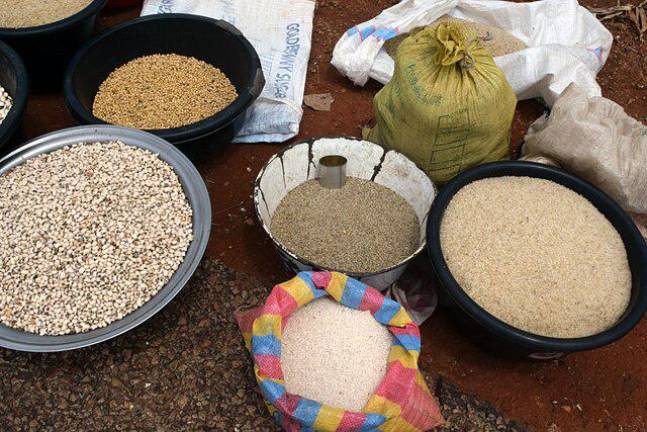Latin Cuisine with Heavy Emphasis on Beans and Grains Can Yield a Healthier Body Weight
The Latin cuisine, even when it brings in animal based foods, will generally used fish and other seafood to compliment offerings that are heavy on black beans and grains. And that supports healthier body weight overall, according to one three-year study by the CDC.

Every year, Americans celebrate 311 Commemorative Months named for subjects ranging from the serious such as Sickle Cell Awareness to the less so like Better Breakfasts, both happening as you read this.
Virtually every one of these celebrations begins on the first day of the month and runs for the next four weeks. The single exception is National Hispanic Heritage Month which starts right smack in the middle on September 15. How come? Because this one began as one special week named by Lyndon B. Johnson in 1968. Twenty years later, Ronald Reagan expanded it to a whole month but kept the starting date perhaps to coincide with the 9/15 Independence Day celebrations in Costa Rica, El Salvador, Guatemala, Honduras, and Nicaragua, followed one day later by Mexico and three days after that by Chile.
But that’s political. What matters more to most nutritionists is the diet, not the day. As the reliable WebMd explains, you can learn a lot from what people eat in those seven countries. Think chili, black bean stew, and all the other bean-and-grain dishes whose complementary proteins stand in for red meat while their high fiber moves things along and helps to maintain a healthful weight.
One three-year Centers for Disease Control and Prevention study found that people on bean-based diets often weigh an average seven pounds less than those feasting on red meat even when the former’s daily calorie count comes in 199 calories higher than the latter’s.
Of course, beans and grains aren’t the only plant foods Latin cuisine embraces.
A recent consumer research report notes that the average American dinner now serves fewer than three items, “one of them a beverage” which is definitely not one of the five daily servings of veggies and fruit USDA recommends. The good news is that the U.S. Department of Agriculture’s Center for Nutrition Policy and Promotion shows Latin cuisine as a workaround whose popular one-dish meals from tortillas on up the culinary ladder are likely to include an entire rainbow of veggies from white onions to green peppers and red tomatoes and more. And Harvard Heart Letter editors Julie Corliss and Christopher P. Cannon write that when Latin meals do include foods from animals they generally substitute fish and other seafood for higher fat and cholesterol red meats, often with more plants in the mix. One tasty example is the universally popular sweet and spicy chicken mole poblano (“village sauce”) which delivers iron-rich chocolate, chili peppers, and the cook’s choice of spices including antioxidant cinnamon.
Finally, how you eat what’s on the plate also counts. Latin diners appear to approach dining in a more leisurely manner than the rest of us. According to Liz Mintz, the Latino Nutrition Coalition Manager at Boston’s Oldways Preservation and Exchange Trust, they’re unlikely to eat on the run, at the computer, or in the car, thus avoiding the kind of semi-conscious consumption that often leads to eating more than you meant to and may explain that extra seven pounds. Best of all, Latin dinners are more often family affairs where conversation works to slow consumption and enrich family bonds.
In short, buen apetito.
With every single bite.